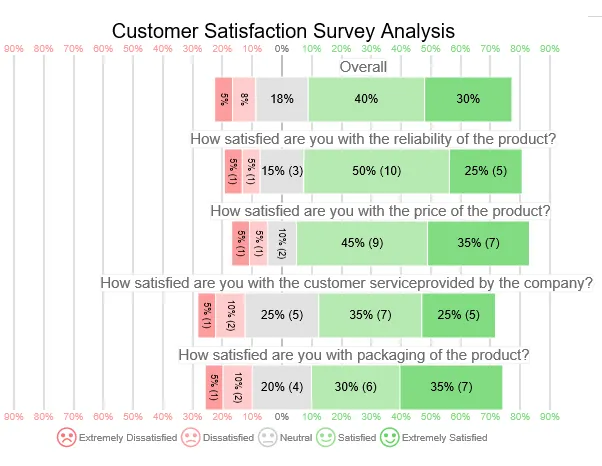Customer survey Data Analysis have become an indispensable tool for businesses looking to gain valuable insights into their customers’ needs, preferences, and overall satisfaction. Analyzing customer survey data can be a powerful way to uncover hidden patterns, identify opportunities for improvement, and make data-driven decisions that drive business growth.
In this article, we will explore the importance of customer survey data analysis and some best practices to get the most out of the data.
Why Customer Survey Data Analysis Matters
Customer survey data analysis provides businesses with a direct line of communication to their customers, enabling them to understand their perceptions and opinions better. Here are some key reasons why it matters:
- Insight into Customer Needs: Analyzing survey data allows businesses to gain a deeper understanding of what their customers want. This knowledge is crucial for developing products and services that align with customer expectations, increasing customer satisfaction, and building long-lasting relationships.
- Identifying Pain Points: Customer surveys often reveal pain points and areas of dissatisfaction. By identifying these areas, businesses can address the issues promptly, improving customer experience and loyalty.
- Benchmarking Performance: Analyzing survey data over time or comparing it with industry benchmarks helps businesses evaluate their performance. It allows them to gauge how well they are meeting customer expectations and stay competitive in the market.
- Spotting Trends: Customer survey data can uncover emerging trends in customer behavior, preferences, or expectations. Businesses can capitalize on these trends to tailor their offerings and stay ahead of the competition.
- Reducing Churn: Satisfied customers are more likely to remain loyal to a brand. By analyzing survey data, businesses can reduce customer churn and retain valuable customers.

Best Practices for Customer Survey Data Analysis
To make the most of customer survey data, businesses should follow these best practices:
- Clear Objectives: Define the objectives of the survey before collecting data. Clear goals will guide the data analysis process and ensure actionable insights.
- Choose the Right Tools: Invest in robust survey tools that offer data analysis capabilities. For example tools like Google Forms for survey can streamline data collection and the we can use tools that can do the part of analysis, and reporting.
- Clean and Prepare Data: Ensure the data is clean, accurate, and free from errors. Remove any outliers or irrelevant information that may skew the results.
- Segmentation: Segment the survey data based on demographics, purchasing behavior, or other relevant criteria. This helps identify patterns and preferences among different customer groups.
- Quantitative and Qualitative Analysis: Combine both quantitative (e.g., ratings, numerical data) and qualitative (e.g., open-ended responses) analysis for a comprehensive understanding of customer sentiment.
- Data Visualization: Use data visualization techniques like charts such as likert scale, bar chart, NPS chart, graphs, and heatmaps to present findings effectively. Visual representations make it easier for stakeholders to grasp insights quickly.
- Compare Results Over Time: Conduct regular surveys and compare results over time to track changes in customer satisfaction and identify trends.
- Collaborate Across Teams: Involve various teams, such as marketing, product development, and customer support, in the data analysis process. Cross-functional collaboration can lead to better decision-making.
- Act on Insights: The most crucial step is to act on the insights gained from the analysis. Use the findings to make data-driven improvements to products, services, or customer interactions.
Common Challenges in Customer Survey Data Analysis
While customer survey data analysis is invaluable, it does come with some challenges:
- Response Bias: Survey respondents might not always represent the entire customer base, leading to response bias and potentially skewing the results.
- Incomplete Data: Sometimes, respondents may skip questions or provide incomplete answers, affecting the completeness of the dataset.
- Interpreting Open-ended Responses: Analyzing qualitative data can be time-consuming and subjective. Sentiment analysis tools and thematic coding can help address this challenge.
- Overlooking Small Segments: Small customer segments might not show significant results on their own. But could be vital when combined with other data.
Conclusion
Customer survey data analysis is a powerful tool that empowers businesses to understand their customers better and drive growth. By adopting best practices and overcoming challenges. Businesses can extract actionable insights from survey data and make informed decisions that enhance customer satisfaction and loyalty.
Remember, the key is not just to collect data but to leverage it effectively to create meaningful improvements in products, services, and overall customer experience.
